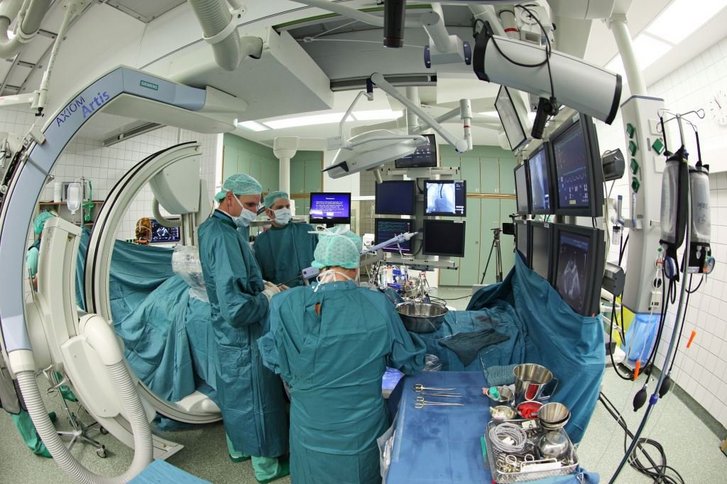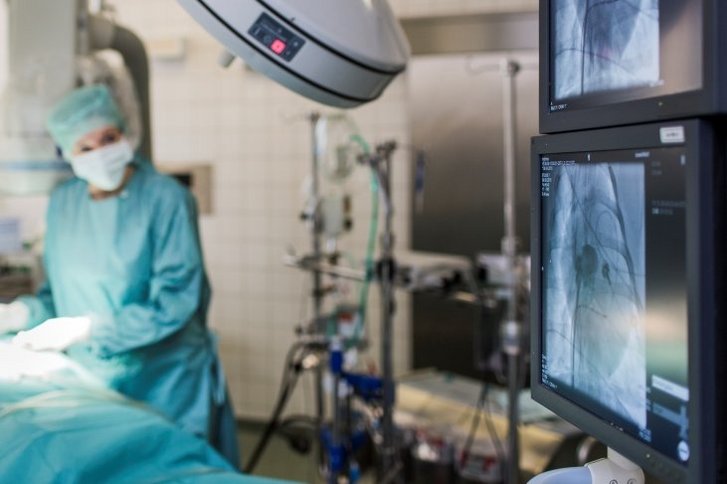
Using coronary angiography, our cardiologists at the Heart Center Leipzig can improve the visibility of the coronary arteries with the help of a special X-ray examination. Coronary angiography usually takes place as part of cardiac catheterization, and uses a contrast agent which is injected through the cardiac catheter. This technique is harmless to you, but can supply our doctors with valuable information to improve your treatment.
